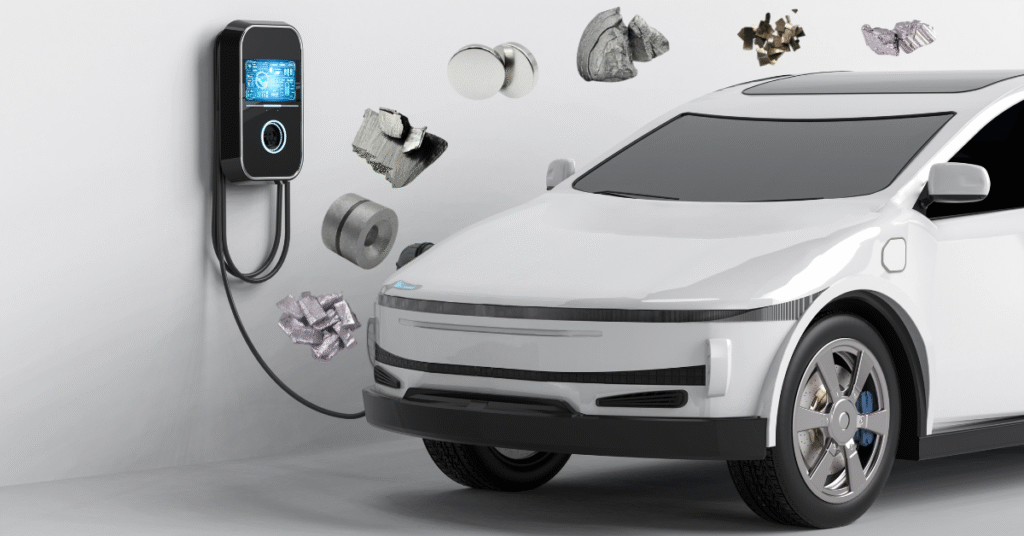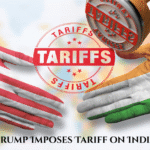Volume iI
7 Rare Earth Metals and the Magnet Power Shift in Indian Auto Industry
As India shifts gears towards electric mobility, one thing is clear: without rare earth metals, the future of EVs in India could hit a major roadblock. These metals are the silent powerhouses behind electric motors, and their role is becoming more critical than ever.
Here’s a closer look at seven rare earth elements that are essential for making powerful magnets used in EVs and why they matter for India’s auto scene.
🔹 1. Neodymium (Nd)
A key ingredient in NdFeB (Neodymium-Iron-Boron) magnets — these are the strongest permanent magnets known.
You’ll find them in electric motors, wind turbines, and even your headphones. They offer high power in a small size, which is perfect for compact EV motors.
🔹 2. Praseodymium (Pr)
Used with neodymium to make magnets even stronger and more heat-resistant.
Perfect for hybrid cars and high-performance EVs, especially in hot countries like India.
🔹 3. Dysprosium (Dy)
This metal boosts a magnet’s ability to work in high temperatures.
It’s absolutely essential for EVs to perform well in India’s hot weather.
🔹 4. Terbium (Tb)
Another heat-resistant metal, terbium is similar to dysprosium but even rarer and more expensive.
Used in select advanced EVs and magnet systems.
🔹 5. Samarium (Sm)
Used in SmCo (Samarium-Cobalt) magnets, which are highly resistant to corrosion and heat.
Common in aerospace, military, and premium EVs.
🔹 6. Gadolinium (Gd)
Known for its magnetic and cooling properties, though used in fewer EV applications.
More common in specialized tech and research-based projects.
🔹 7. Cerium (Ce)
Not as strong, but used in battery chemicals and budget magnet alloys.
Helps reduce costs in large-scale EV production.
The Magnet Tech Behind EVs
Two main types of magnets power the EV world:
- NdFeB Magnets:
- Small, lightweight, super powerful
- Used in EV motors, power steering, and regenerative braking
- SmCo Magnets:
- More durable in high heat and corrosion-prone environments
- Often found in premium or military-grade systems
How This Impacts Indian Auto Market
1. EV Market Growth = Rare Earth Demand Surge
India is investing heavily in EVs — from Tata to Ola Electric, all major players need powerful magnets.
This means huge demand for rare earth metals like neodymium and dysprosium.
2. China Dependency Could Be Risky
Right now, most rare earths are imported from China.
Any tension or disruption could slow down EV production and raise costs.
3. Price Volatility = EV Cost Issues
Rare earth prices fluctuate frequently. This could make EVs more expensive in India, affecting mass adoption.
4. Local Reserves but No Processing
India does have rare earth deposits (especially in Odisha and Tamil Nadu), but we lack proper refining facilities.
Setting up local supply chains is now a top priority.
5. Government Is Pushing Self-Reliance
Under the Atmanirbhar Bharat mission, the Indian government is promoting rare earth mining and magnet production.
This move is meant to cut dependency and create jobs in EV manufacturing.
6. Auto Giants Need to Act Fast
Companies like Tata, Mahindra, and Hero Electric must secure supply chains — whether through international deals or local mining partnerships.
If they don’t, they risk falling behind global competitors.
7. Environmental Red Flags
Mining rare earths isn’t clean. It requires careful regulation to avoid pollution and public backlash.
Sustainability will play a big role in how fast India can mine and use these materials.
Final Word: Why It Matters
Rare earth metals are the hidden fuel behind India’s electric dreams.
If India wants to become a global EV leader, securing these seven metals — and the powerful magnets they help create — is a must.
The clock is ticking. The EV revolution is here. But without rare earths, it may not go very far.
The series continues to know more about rare earth metals, Explore Lostnews.org
By Himansh Kumar | June 12, 2025






